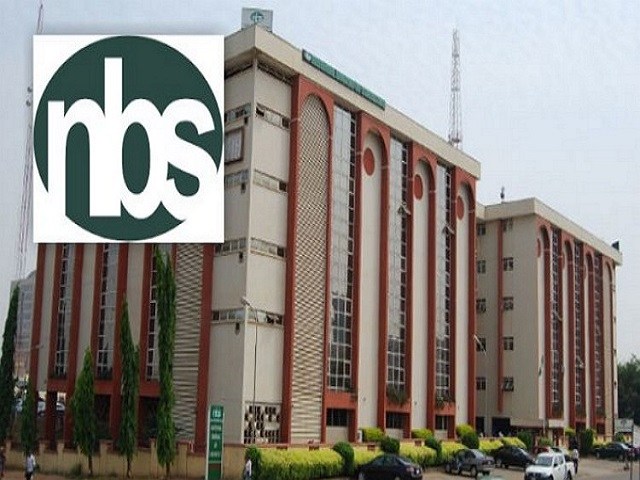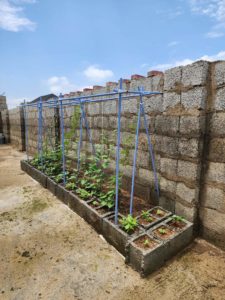Again, NBS says Nigeria’s employment rate jumped by 76.6% in Q1, 2023

![]()
Barely days after Nigerians and others faulted the National Bureau of Statistics (NBS) report which had put the country’s unemployment rate at 4.1 per cent, the agency has again disclosed that employment rate in Nigeria climbed by 76.7 per cent in the first quarter of this year.

This is also as the bureau said the country’s Gross Domestic Product (GDP) rose by 2.51 per cent (year-on-year) in real terms in the second quarter of the same year under review.
According to the NBS, the GDP growth rate is lower than the 3.54 per cent recorded in the second quarter of 2022 and may be attributed to the challenging economic conditions being experienced.
In its “Nigeria Gross Domestic Product Q2 2023” report published on the NBS website, the Bureau said the performance of the GDP in the second quarter of 2023 was driven mainly by the Services sector, which recorded a growth of 4.42% and contributed 58.42% to the aggregate GDP.
“The agriculture sector grew by 1.50%, an improvement from the growth of 1.20% recorded in the second quarter of 2022. The growth of the industry sector was -1.94% relative to -2.30% recorded in the second quarter of 2022.”
In terms of share to the GDP, agriculture, and the industry sectors contributed less to the aggregate GDP in the second quarter of 2023 compared to the second quarter of 2022.
Meanwhile, the NBS has stated that about three-quarters of working-age Nigerians was employed, in the fourth quarter of 2022 and 76.7 per cent in the first quarter of 2023, in its recent report.
According to NBS, the difference represents 73.6 per cent.
“This indicates that most people were engaged in some type of job for at least one hour in a week, for pay or profit during the states time period,” the NBS.
The NBS had relied on data supplied by the Nigeria Labour Force Survey published on its website which indicated that the unemployment rate was 5.3% in Q4 2022 and 4.1% in Q1 2023.

According to NBS, this ‘aligns with the rates in other developing countries where work, even if only for a few hours and in low-productivity jobs, is essential to make ends meet, particularly in the absence of any social protection for the unemployed.’
“The share of wage employment was 13.4% in Q4 2022 and 11.8% in Q1 2023, while more Nigerians operate their own businesses or engaged in farming activities, recorded at 73.1% in Q4, 2022 and 75.4% in Q1, 2023.
“About one-third (36.4% in Q4 2022 and 33.2% in Q1 2023) of employed persons worked less than 40 hours per week in both quarters, the statement added.
“It said this is most common among women, individuals with lower levels of education, young people, and those living in rural areas.
“Underemployment rate which is the share of employed people working less than 40 hours per week and declaring themselves willing and available to work more was 13.7% in Q4 2022 and 12.2% in Q1 2023.
“The rate of informal employment including agriculture among the employed Nigerians was 93.5% in Q4 2022 and 92.6% in Q1 2023.”
“According to the statement, the report not only offers a snapshot of the current employment landscape but also provides a foundation for evidence-based policymaking.
“It’s insights into labour market statistics empower stakeholders to make informed decisions that can shape the country’s labour market and economy.
“The statement added that the survey was jointly conducted by the World Bank, International Labour Organisation, and other stakeholders,” the NBS said.
It would be recalled that the NBS stirred controversy, last week, following its report which claimed that the country’s unemployment rate had dropped from 33.3 per cent to 4.1 per cent in the first quarter of 2023 on the back of a recalculation of the various indices to arrive at the new figure.
According to NBS, Nigeria’s unemployment rate dropped to 4.1 percent in the first quarter of 2023, from the 33.3 per cent recorded in its last report released as of the fourth quarter of 2020.
The last survey was conducted using the 13th ICLS, which was birthed and adopted in 1982 at the International Conference of Labour Statisticians.
The NBS also disclosed that the figure for the fourth quarter of 2022 was 5.3 percent.
NBS had earlier announced that it would use a new methodology which aggregates the number of employed and unemployed persons in the country to get accurate data on labour force.
According to the Statistician General of the Federation, Mr. Adeyemi Adeniran, the NBS adopted new methods in recalculating the unemployment rate.
“Following guidelines adopted during the 19th International Conference of Labour Statisticians (ICLS) in Geneva in 2013, the aim of this re-evaluation was two-pronged.
“On one hand was to ensure that the methodology is in line with international best practice and locally relevant, and on the other hand, to ensure that a production process was robust enough to produce estimates on a sustainable basis (avoiding periodic gaps), and also, produce more labour market indicators and analysis that will inform government about the employment and job situation in Nigeria,” explained Adeniran.
Speaking during the launch of the new methodology in Abuja on Thursday, Mr. Adeniran said the new figure brings Nigeria’s Labour Survey in tandem with international standard, adding that the survey was conducted in collaboration with the World Bank and the International Labour Organisation and has been adopted by 26 countries in Africa.
Adeniran said the new methodology considered employed persons as those who engaged in at least one hour of work during the last seven days the survey was conducted.
He stressed that the new figure was not to give the new government a good face but to bring up the method used to conduct labour survey in the country.
The old method defined those that are in the labour force to be from 15-64 years old but the new adopted one views it to be 15 and above that are willing, available, and able when the survey is conducted.
Also, those that would be categorized as unemployed would have worked at least one hour from the previous seven days the survey would be conducted which is a departure of the 20 hours the old method carried.
However, reacting to the NBS disclosure, Thursday, most Nigerians expressed doubts over the agency’s claims, as, according to them, going by the number of private companies and manufacturing giants closing down and exiting the country, with the attendant loss of jobs, the figure thrown up by the statistics bureau is a mockery, questionable, regardless of the methodology adopted in arriving at the rate.
According to a Lagos-based economist, Mr Ehi Adenoyi, the figure arrived at by the NBS does not tally with the reality on ground no matter the indices applied at arriving at it.
“The fact remains that most, and I mean a whole lot of Nigerians are unemployed and depend on handout and giveaways to make ends meet. Is that employment? I saw the recent palliative distribution in Lagos and the number and faces of Nigerians can only mean they are not gainfully employed; because they were they wouldn’t be there in the first place.
“With the hordes and droves of manufacturing plants shutting down monthly, those still surviving barely able to pay salaries. Arriving at 4.1 per cent does not capture the reality on ground.
“The Manufacturers Association of Nigeria (MAN) will gladly give you data on the number of affiliates groups winding operations and downsizing workforce. And this applies to other business sectors in the country,” said Mr Adenoyi adding further that; ‘the metrics adopted by the NBS to arrive at the 4.1 per cent is too foreign, in my opinion.’
Similarly, the World of Statistics via its Twitter (now X) handle (@stats_feed) had posted a 33. 3 per cent figure as the unemployment rate for Nigeria, on Monday, August 21.
Nigeria also led the unemployment table on the global rates as published by the group.
According to opinions sampled by Oracle Today newspaper, via the X platform, Thursday, most Nigerians dismissed the NBS report as ‘propaganda,’ while others described it as mockery of unemployed people in the country.




